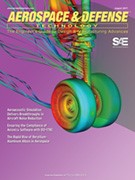Technical Paper
FENSAP-ICE in Aid of Certification: From CFD to Flight Testing
2011-06-13
2011-38-0033
This work presents an example of the application of FENSAP-ICE to predict 45 minutes of ice accretion on a RC-26B aircraft fuselage retrofitted by the addition of a FLIR sensor and a SATCOM antenna. The predicted aerodynamic penalties are compared with recorded flight test data obtained with simulated ice shapes.




